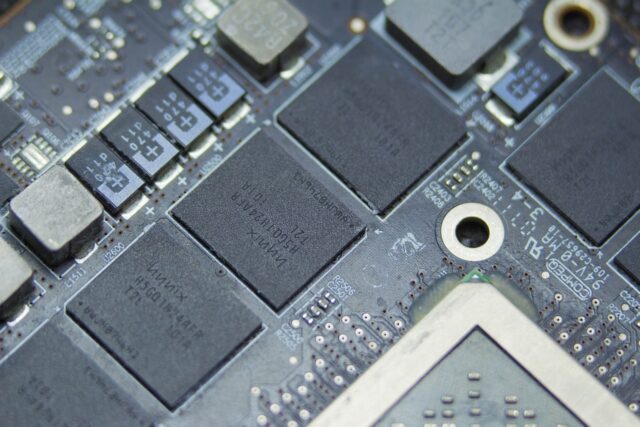In the sprawling landscape of cryptocurrency, where every transaction echoes like whispers in a vast canyon, the structures that govern mining pools stand as vital pillars in this digital realm. The debate between decentralization and centralization is not merely academic; it reverberates through the very fabric of how we understand ownership, control, and community within the blockchain ecosystem. As we delve into this comprehensive examination, we will find that these two approaches to mining pools offer distinct advantages and challenges, shaping the experiences of miners and investors alike.
Mining, in its essence, is an act of discovery–unearthing new coins while validating transactions that weave the tapestry of trust across a decentralized network. Yet, as we gather around the campfire of this novel technology, the question arises: should we band together in centralized pools, where power consolidates like a warm blanket on a cold night, or venture into the wilds of decentralized pools, where autonomy reigns and collective strength emerges? Analyzing these contrasting paths reveals not only the mechanics of each structure but also the philosophies that underpin them.
In this guide, we embark on an in-depth journey through the labyrinth of mining pool structures. By evaluating both centralized and decentralized models, we aim to illuminate their respective virtues and vices. Are centralized pools more efficient, yielding faster rewards at the cost of individual agency? Or do decentralized pools foster a sense of community and resilience, despite potential inefficiencies? As we compare these two approaches, we invite you to consider your own position within this evolving narrative–a tale of innovation, ambition, and the ever-present quest for balance in a world that thrives on disruption.
Exploring Decentralized vs Centralized Mining Pools: A Step-by-Step Comparison
In the vast landscape of cryptocurrency mining, two distinct structures emerge as prominent players: centralized and decentralized mining pools. Each of these pools offers unique characteristics that appeal to different types of miners, yet they share a common goal–maximizing efficiency and profitability. This comprehensive examination aims to guide you through the intricacies of these mining structures, shedding light on their differences, advantages, and potential drawbacks.
Centralized mining pools operate under a singular authority, where a powerful entity governs the distribution of rewards and responsibilities. This model presents an alluring simplicity; miners connect to a single pool, relying on its infrastructure to manage transactions and payouts. However, centralization introduces vulnerabilities. The power held by one organization can lead to monopolistic practices, diminishing the very essence of decentralization that many in the cryptocurrency community cherish. As we delve deeper into this comparison, it becomes evident that while centralized pools may promise immediate gains, they come at a cost of trust and autonomy.
Conversely, decentralized mining pools embody the spirit of collaboration and shared responsibility among participants. In this structure, no single entity holds dominion; instead, power is distributed among miners who contribute their computational resources. This in-depth examination reveals that decentralized pools enhance security and resilience against attacks or failures inherent in centralized systems. By evaluating these structures, one finds that decentralization not only fosters a sense of community but also aligns with the foundational principles of blockchain technology–transparency and fairness.
When analyzing these two approaches side by side, it becomes clear that each has its merits depending on the miner’s objectives. Those seeking stability and ease may gravitate towards centralized pools, enamored by their streamlined processes. Meanwhile, miners driven by idealism and a desire for equitable participation might find solace in the decentralized approach, valuing its resistance to censorship and control. Thus, comparing centralized vs decentralized mining pools unveils a spectrum of choices that cater to diverse philosophies within the mining community.
In conclusion, both centralized and decentralized mining pools present compelling arguments in favor of their structures. Evaluating these differences allows miners to make informed decisions about where to place their efforts and resources in an ever-evolving digital landscape. With each choice comes a responsibility–whether to embrace the convenience of centralization or to champion the ideals of decentralization. In this ongoing journey through the realm of cryptocurrencies, understanding these dynamics will serve as a compass for navigating the complexities of mining today and into the future.
Advantages of Centralized Mining Pools
In the vast landscape of cryptocurrency, where the tides of fortune shift as swiftly as the wind across a barren plain, centralized mining pools stand as bastions of organization and efficiency. Analyzing their structures reveals a framework that offers miners a sense of security and predictability. Centralization allows for streamlined operations, where resources are pooled together with a singular focus on maximizing output. This collective strength often translates into higher chances of successfully mining blocks, making it a compelling choice for those looking to forge their path in this competitive arena.
When comparing centralized versus decentralized mining pools, one cannot overlook the advantages inherent in a centralized structure. The simplicity of management and ease of access to information fosters an environment where miners can concentrate on their craft without the burden of complex decision-making. Centralized pools often provide robust support systems, ensuring that miners receive timely updates about their contributions and rewards. This clarity creates a sense of community among participants, forging connections that might otherwise remain elusive in the vast digital ether.
The comprehensive examination of these mining pool structures reveals that centralization often leads to economies of scale, allowing pools to lower operational costs while enhancing overall profitability. In this regard, centralized pools tend to dominate market share due to their ability to attract larger investments and more sophisticated technological infrastructures. By pooling resources, miners can afford state-of-the-art equipment and leverage advanced strategies that may be beyond the reach of individual miners or smaller decentralized groups.
However, the allure of centralization must be weighed against the ideals of decentralization, which champions independence and resilience. Evaluating these contrasting models provides invaluable insights into the current state of mining operations. As we delve deeper into this comparison, it becomes clear that while centralized mining pools offer undeniable advantages in terms of efficiency and support, the quest for balance between centralization and decentralization remains an ongoing journey–one that reflects our broader aspirations within the ever-evolving world of cryptocurrency.
Conclusion: A Comparative Understanding of Mining Pool Structures
As we have navigated through the intricate landscape of mining operations, a clear distinction has emerged between centralized and decentralized mining pools. Each structure offers unique advantages and challenges that resonate deeply with the philosophies underpinning the cryptocurrency ecosystem. The centralized pools, with their streamlined decision-making and efficiency, provide a certain allure for those seeking immediate rewards. Yet, it is in the decentralized pools that the true spirit of the blockchain flourishes–fostering community, resilience, and democratization of power.
In this comprehensive guide, we have undertaken an in-depth examination of these contrasting mining structures. The comparison highlights not only the operational differences but also the broader implications of centralization versus decentralization within the realm of cryptocurrencies. As we evaluate these mining pools, it becomes evident that the choice between them is not merely technical but philosophical, reflecting one’s values regarding control, trust, and the future of finance.
- Centralized Mining Pools: Characterized by a single entity controlling operations, these structures often lead to greater efficiency and quicker payouts.
- Decentralized Mining Pools: Emphasizing participation and equality, they offer a more equitable reward distribution while enhancing network security.
- The Trade-offs: Centralization may promise higher immediate returns, yet decentralization nurtures a resilient ecosystem less susceptible to manipulation.
In analyzing these pools through our comparative lens, we uncover not just operational mechanisms but also the heartbeats of communities that form around them. The journey into mining reveals deeper narratives about trust, sustainability, and human ingenuity in technology’s ever-evolving embrace. As we conclude this examination, let us carry forward the insights gleaned from both sides of this divide–a guide for future endeavors in this remarkable digital frontier.














